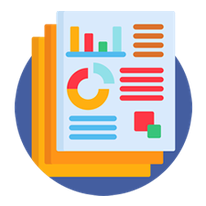Key Features:
No. of pages: 54
Abstract:
Water as an essential commodity plays a major role in national development, the availability of water through pipe borne to individual, communities, and the country at large will help in achieving the New Millennium Development Goal (MDG7), hence the constant study, analysis and forecast for supply of water using past water supplied. The supply of pipe borne water from 2009 to 2015 was examined with the aim of developing a working model to forecast future supply of pipe borne water. All these were achieved using the Box-Jenkins methodology. The Box-Jenkins methodology is a statistical tool that is adequate for the forecasting of time series data. However, before the Box-Jenkins methodology, time plot was plotted to know the components that are present in the supply of pipe borne water in Ilorin, from the graph plotted it was noticed that irregularity and upward trend were the components present with the absent of seasonal and cyclical variations in the series. The series was not stationary but was made stationary after the first difference, Augmented Dickey Fuller Unit Root test was used to confirm the stationarity of the series. After stationarity was established, the model of the supply of pipe borne water was determined using the correlogram and it was suspected that the model was an Autoregressive Integrated Moving Average model. The order of the models and parameter of the models were confirmed from the information criterion computation and it was discovered with ARIMA(0,1,1), ARIMA(0,1,0) and ARIMA(1,1,0). The adequacy of the models was also checked and they were found to be adequate from a series of test like analysis of residual using qq-plot. The best model was picked using the AIC, BIC and HQIC, ARIMA(0,1,0) had the relatively lowest AIC, BIC and HQIC. Therefore, we concluded that our best model is ARIMA(0,1,0). Using the model developed, the supply of pipe borne water for a period of 24 months was forecasted and it was discovered that it follows a slight upward movement. The study concludes that though the forecast proves to be moving upward with time, continuous measures should be carried out so as to check for any decrease in the supply of water in the state.
Table of Content:
Title Pagei
Attestation ii
Certification iii
Dedicationiv
Acknowledgement v
Abstract viii
CHAPTER ONE:INTRODUCTION
1.1Background to the Study1
1.2Study Area1
1.3Definition of Water4
1.4Pipe Borne Water 5
1.5Pipe Borne Water in Kwara7
1.6Water Related Diseases 8
1.7Challenges of Pipe Borne Water
1.8Effect of Pipe Borne Water
1.9Aim and Objectives 8
1.10Source of Data
1.11Justification
1.12Organization of Study 9
CHAPTER TWO:LITERATURE REVIEW
2.1Conceptual Framework10
2.2Options for Water Problem Solution11
CHAPTER THREE: METHODOLOGY
3.0Time Series as a Stochastic Process 11 3.1Introduction12
Types of Time Series`12
Importance of Time Series21
3.4Components of Time Series 22
3.5Box-Jenkins Methodology23
3.5.1Advantages of Box-Jenkins Methodology23
3.5.2Disadvantages of Box-Jenkins Methodology24
3.5.3Summary of Box-Jenkins Methodology25
3.6Identification Procedure25
3.7Autocorrelation Functions25
3.8The Partial Autocorrelation Function26
3.9Stationary and Non-Stationary Process26
3.10Test for Stationary Series27
3.11Removal of Trend and Ensuring Stationarity28
3.12Identifying a Tentetive Model 29
2.19Stationary and Non Stationary Processes 30
2.20Test for Stationary Series 30
2.21Removal of Trend and Ensuring Stationarity 31
2.22Identifying a Tentative Model 32
2.23Autoregressive, AR (p) Process 32
2.24Moving Average, MA (q) Process 33
2.25Autoregressive Moving Average ARMA (p, q) Process 34
2.26Model and Model Order Determination 34
2.27Autoregressive Models 34
2.28Moving Average Model35
2.29Autoregressive Moving Average Model 35
2.30Information Criteria 35
2.31Akaike Information Criterion (AIC) 36
2.32Bayesian Information Criterion (BIC)36
2.33Corrected Akaike Information Criterion (AICC) 37
2.34Diagnostic Checking 37
2.35Forecasting 38
CHAPTER THREE:ANALYSIS AND INTERPRETATIONS OF
RESULT 39
CHAPTER FOUR: CONCLUSIONS AND RECOMMENDATIONS 51
References 53
Buy Now
